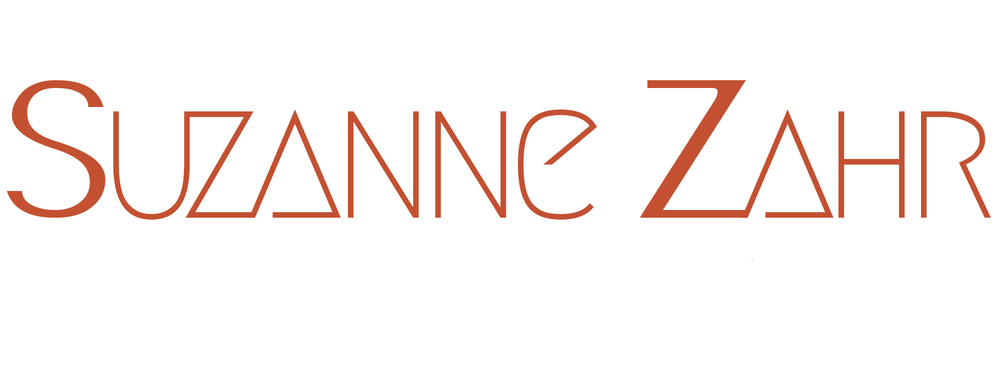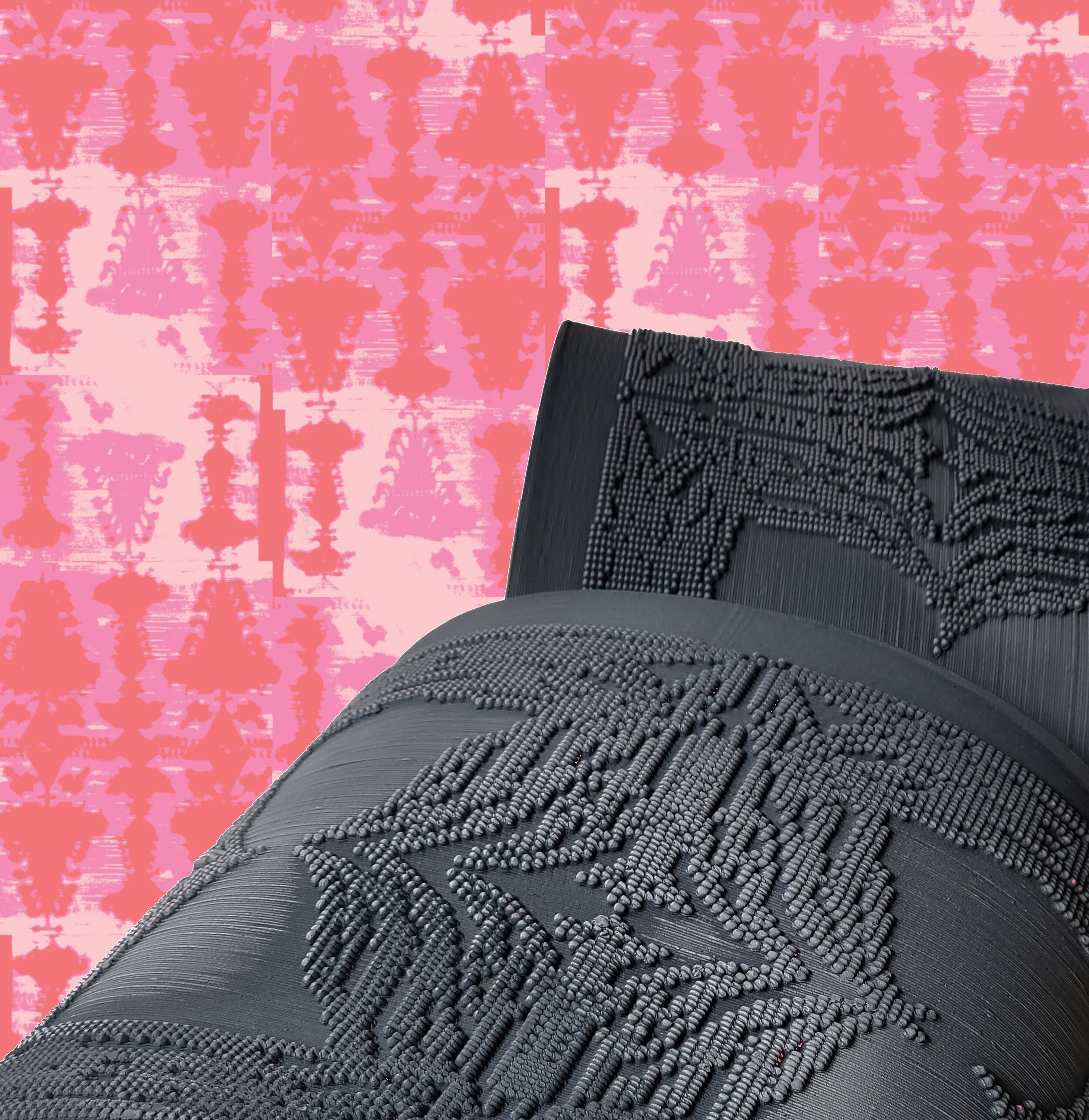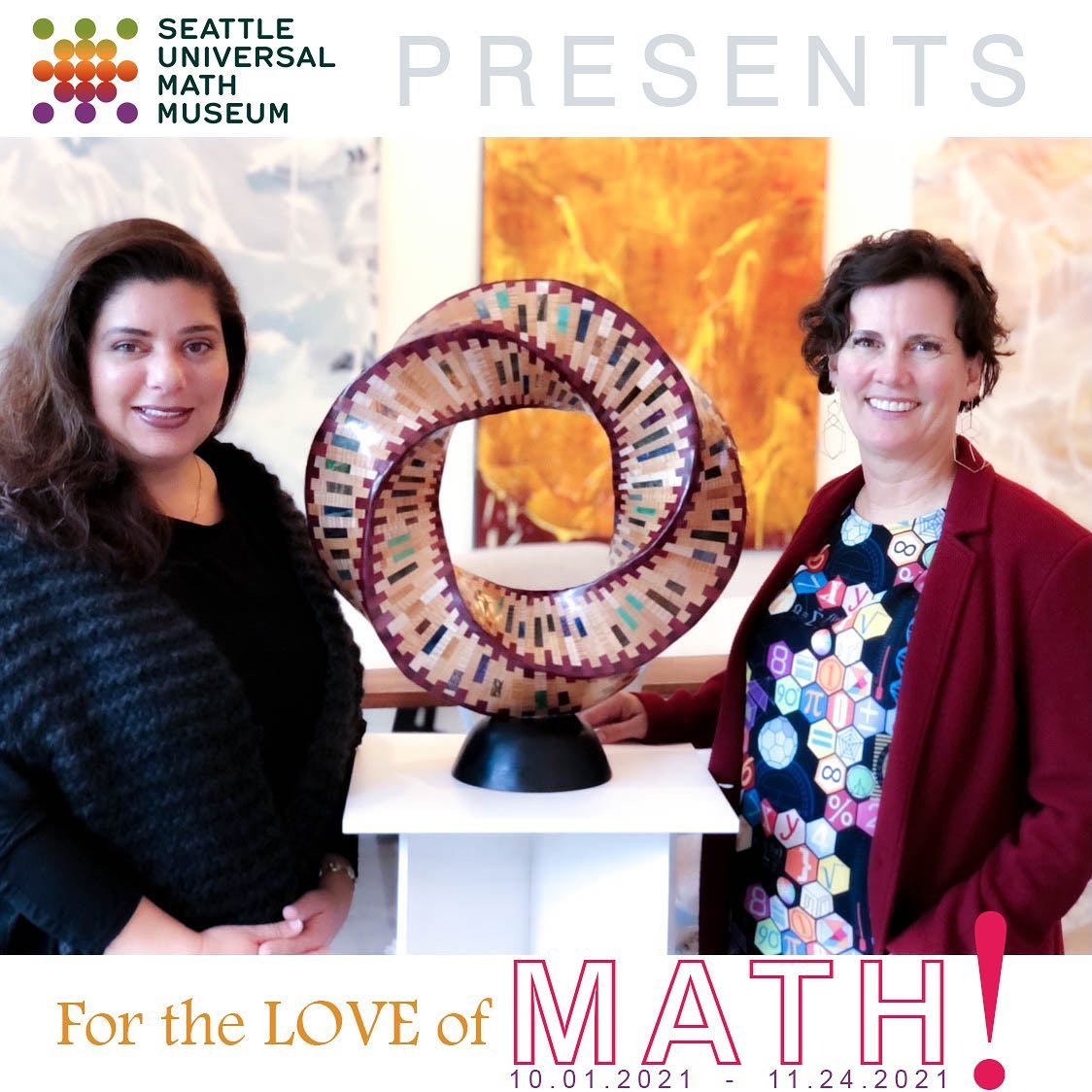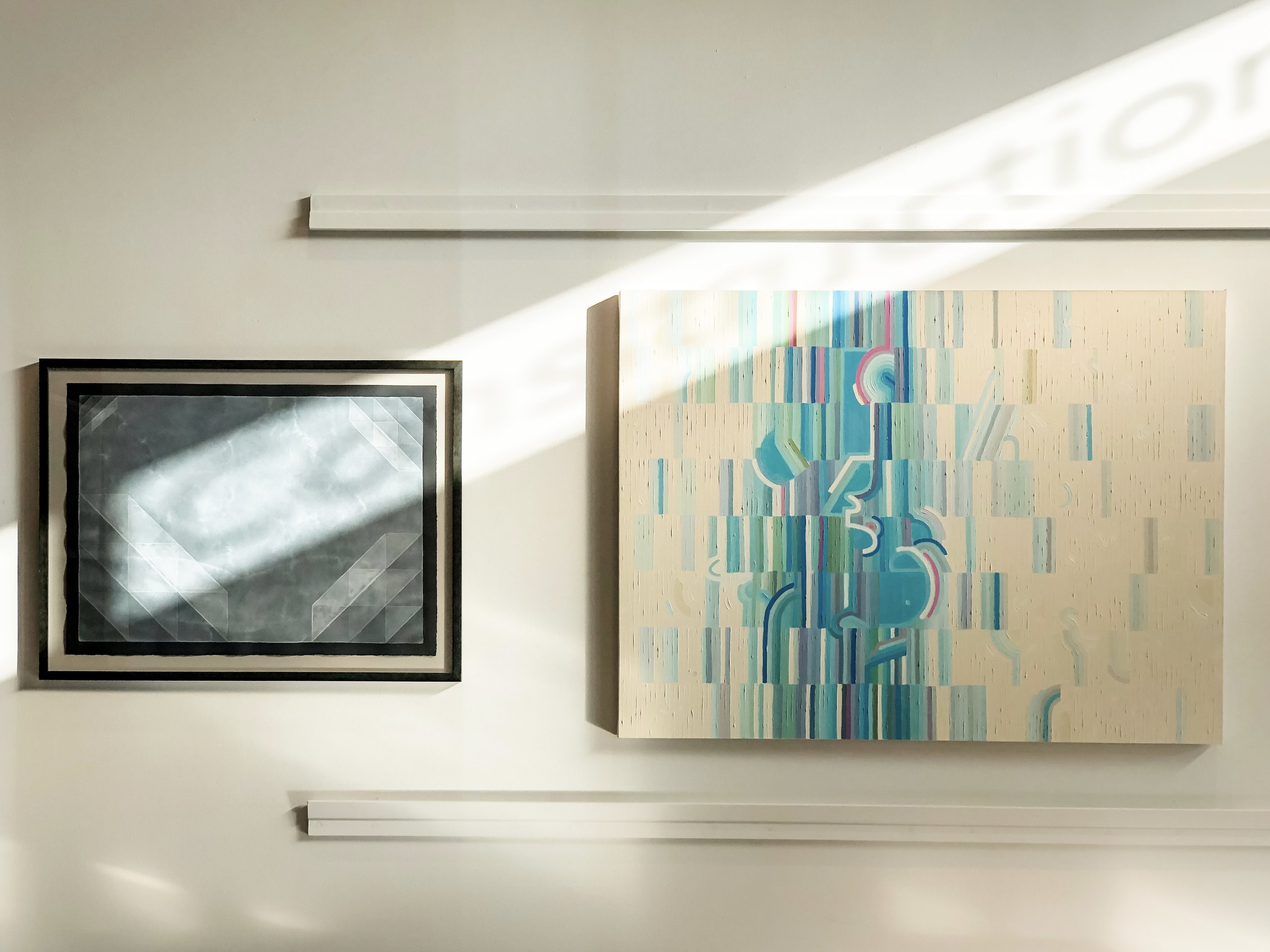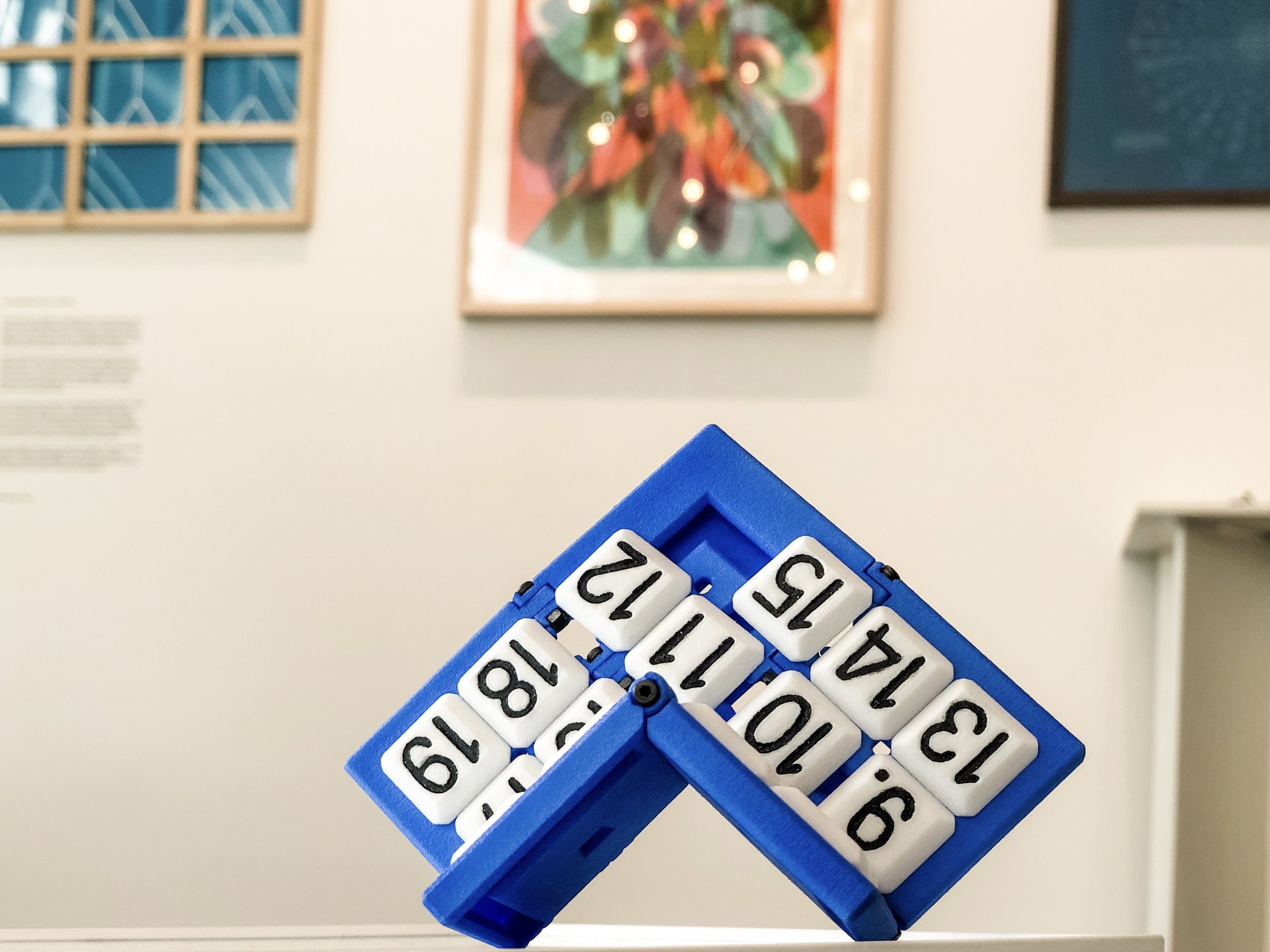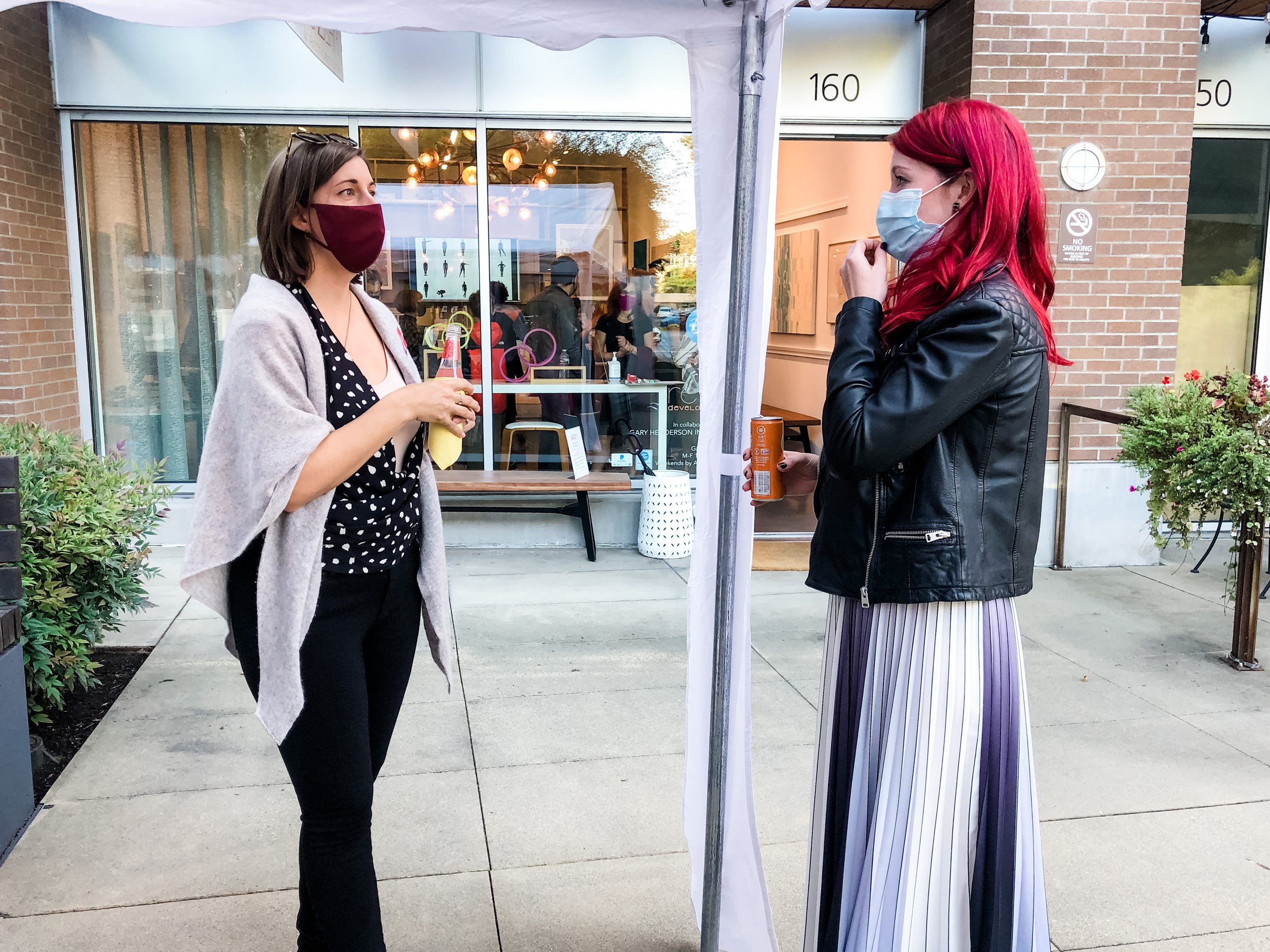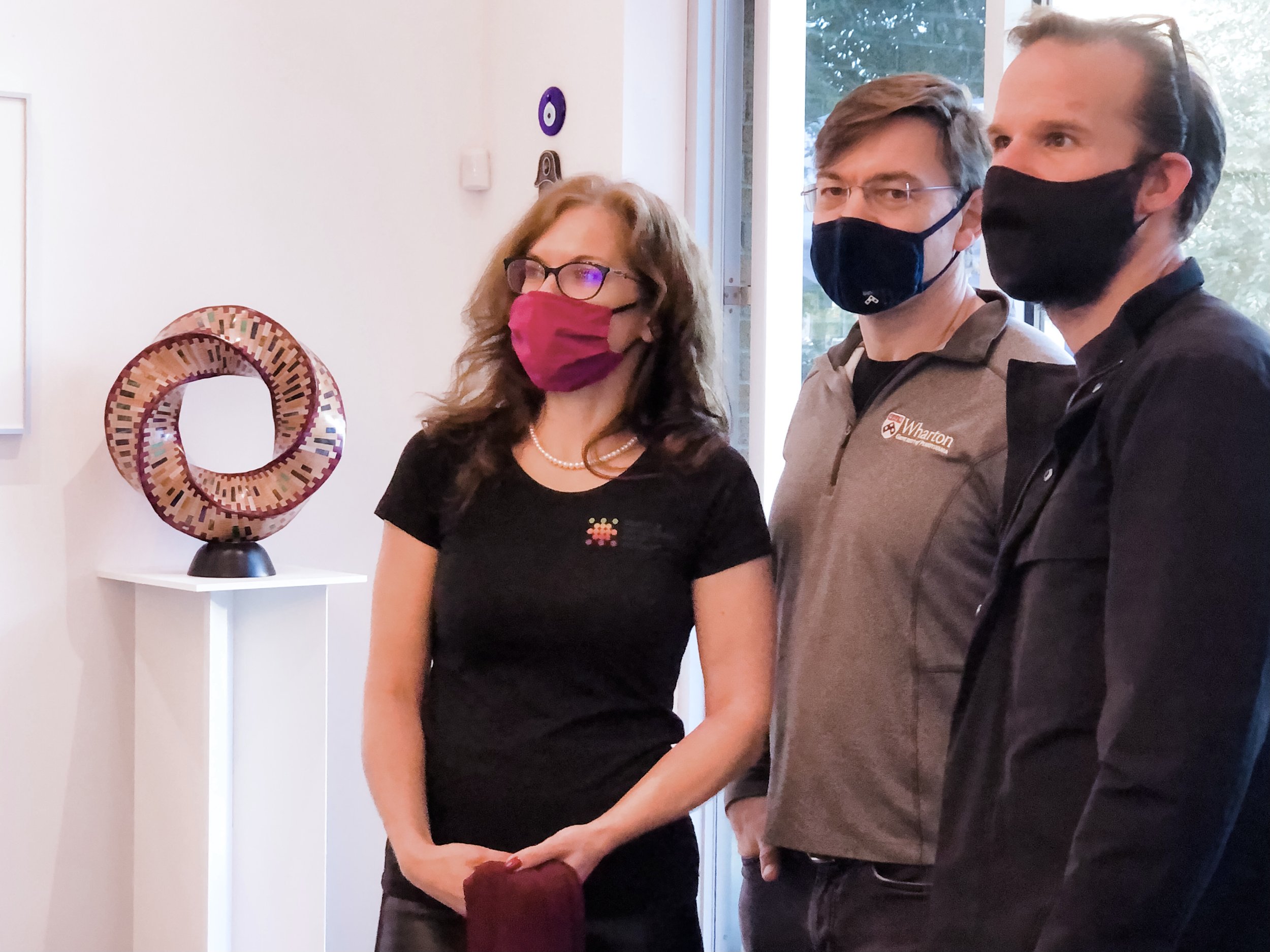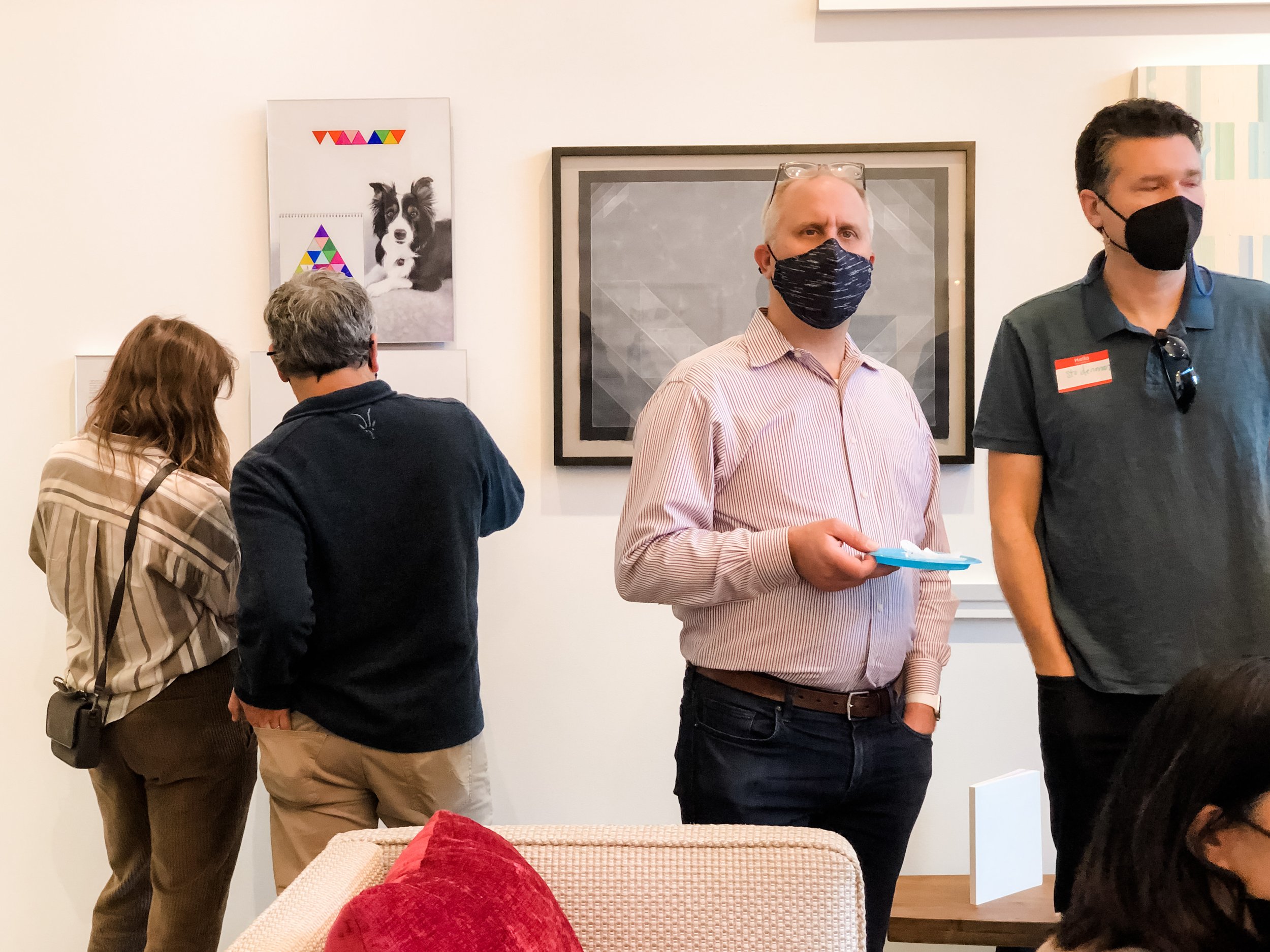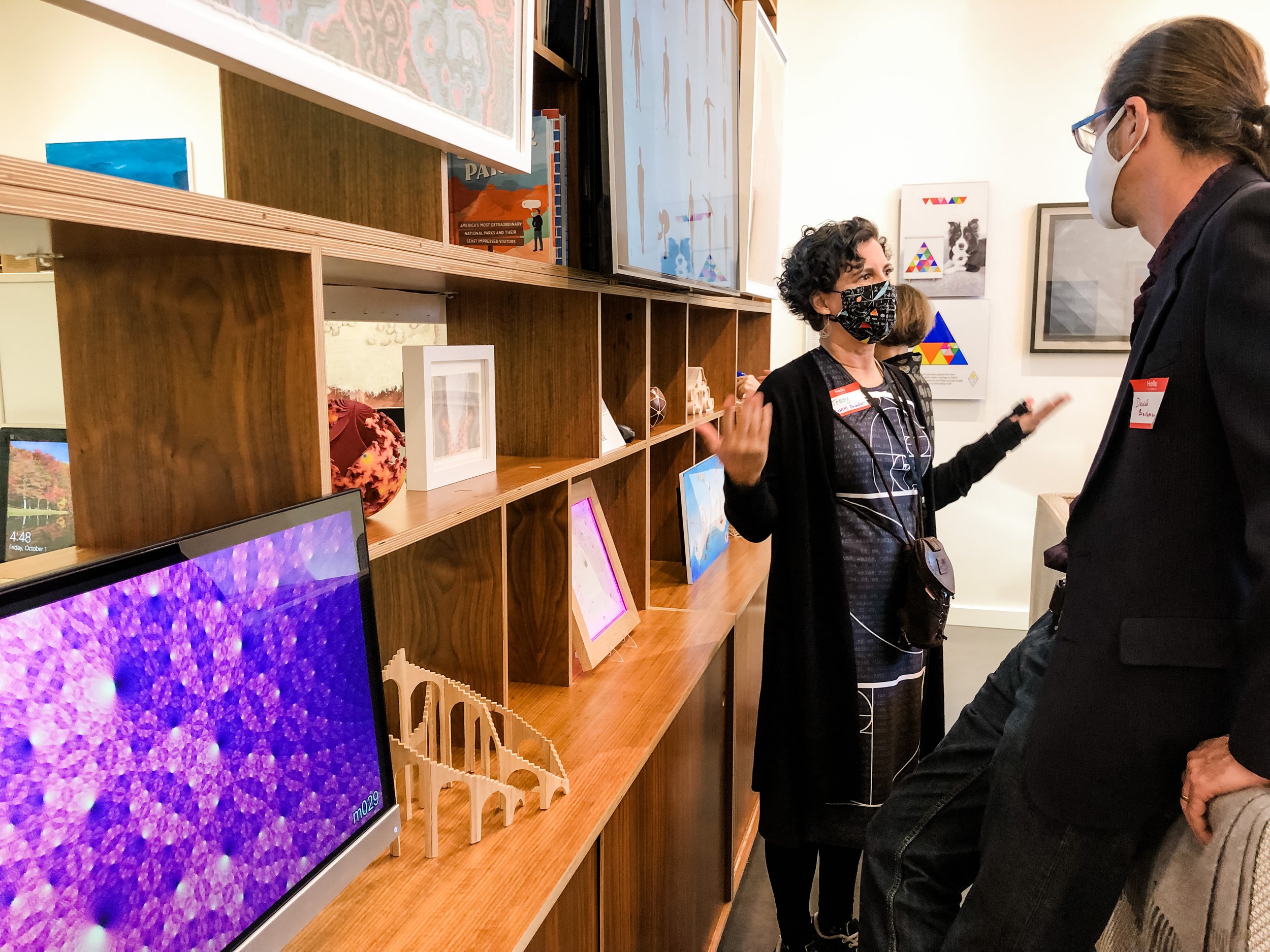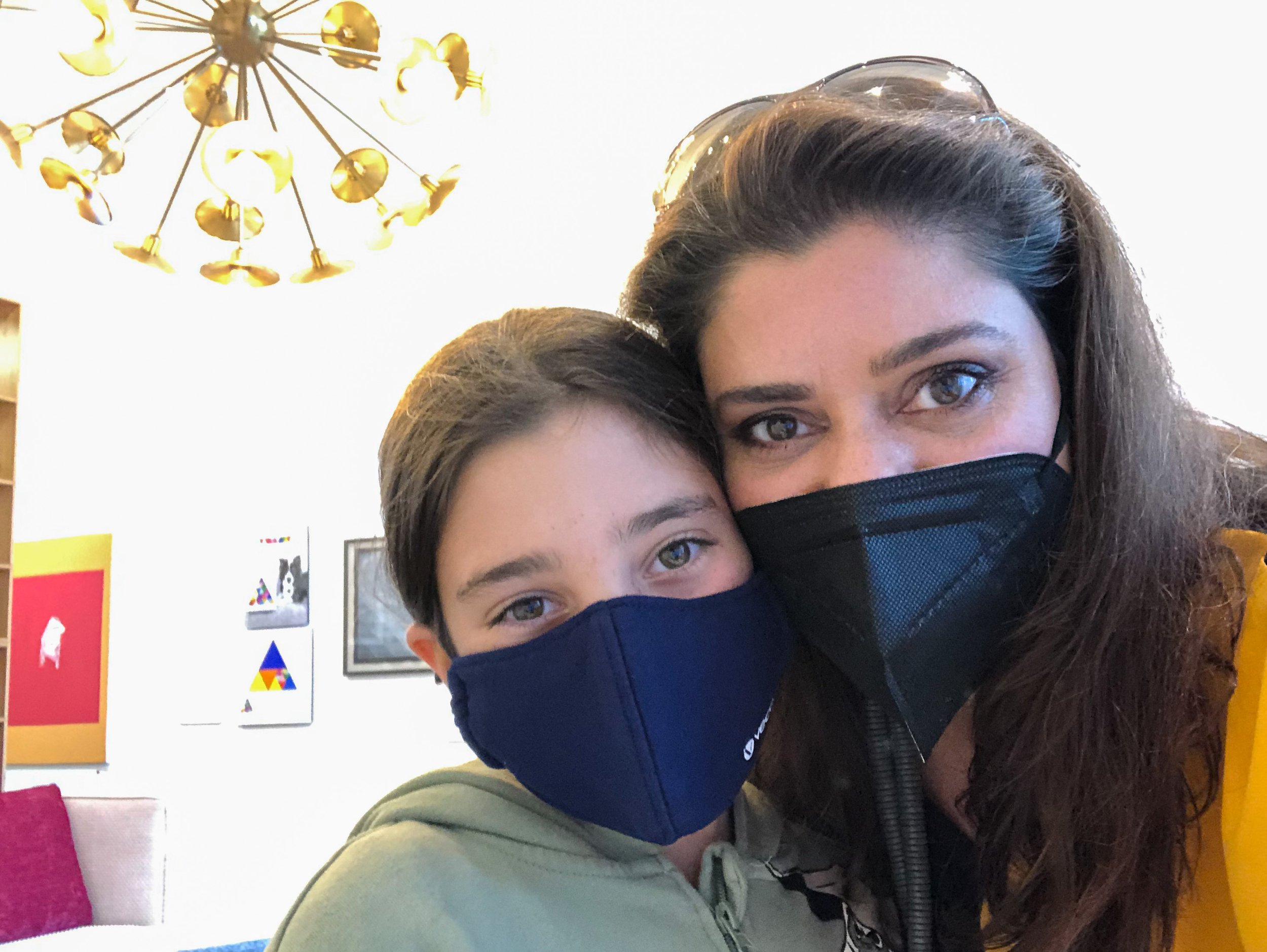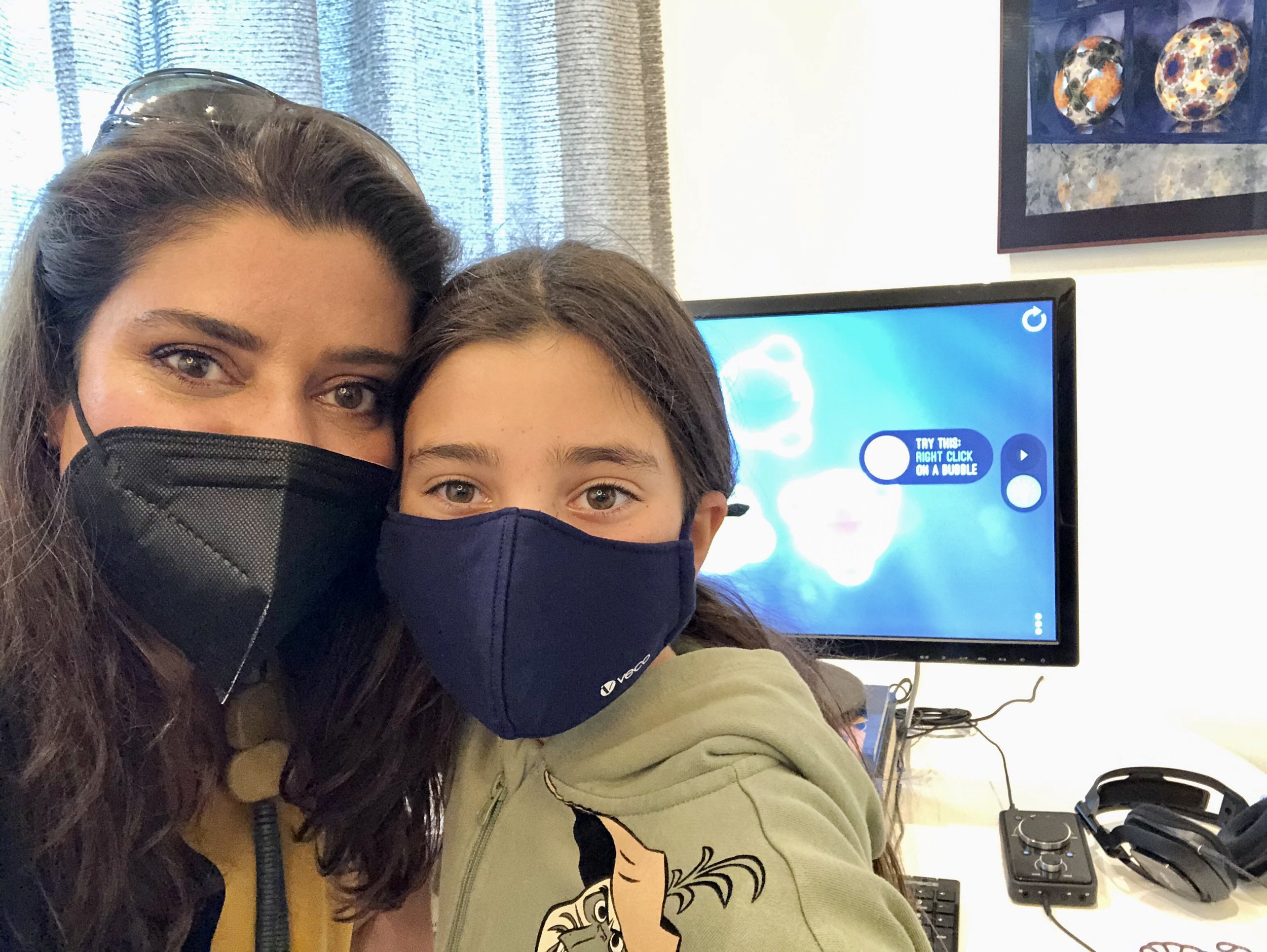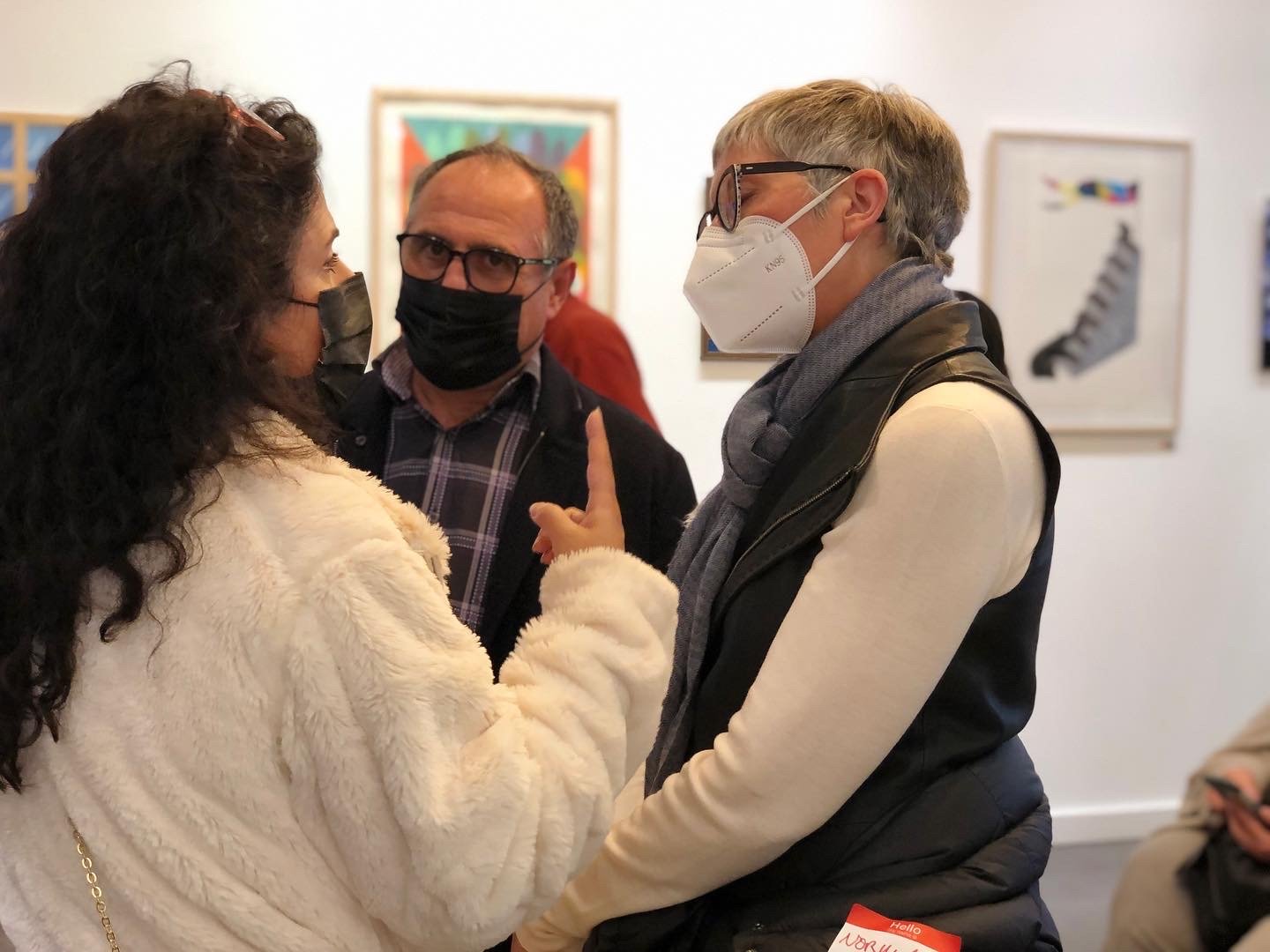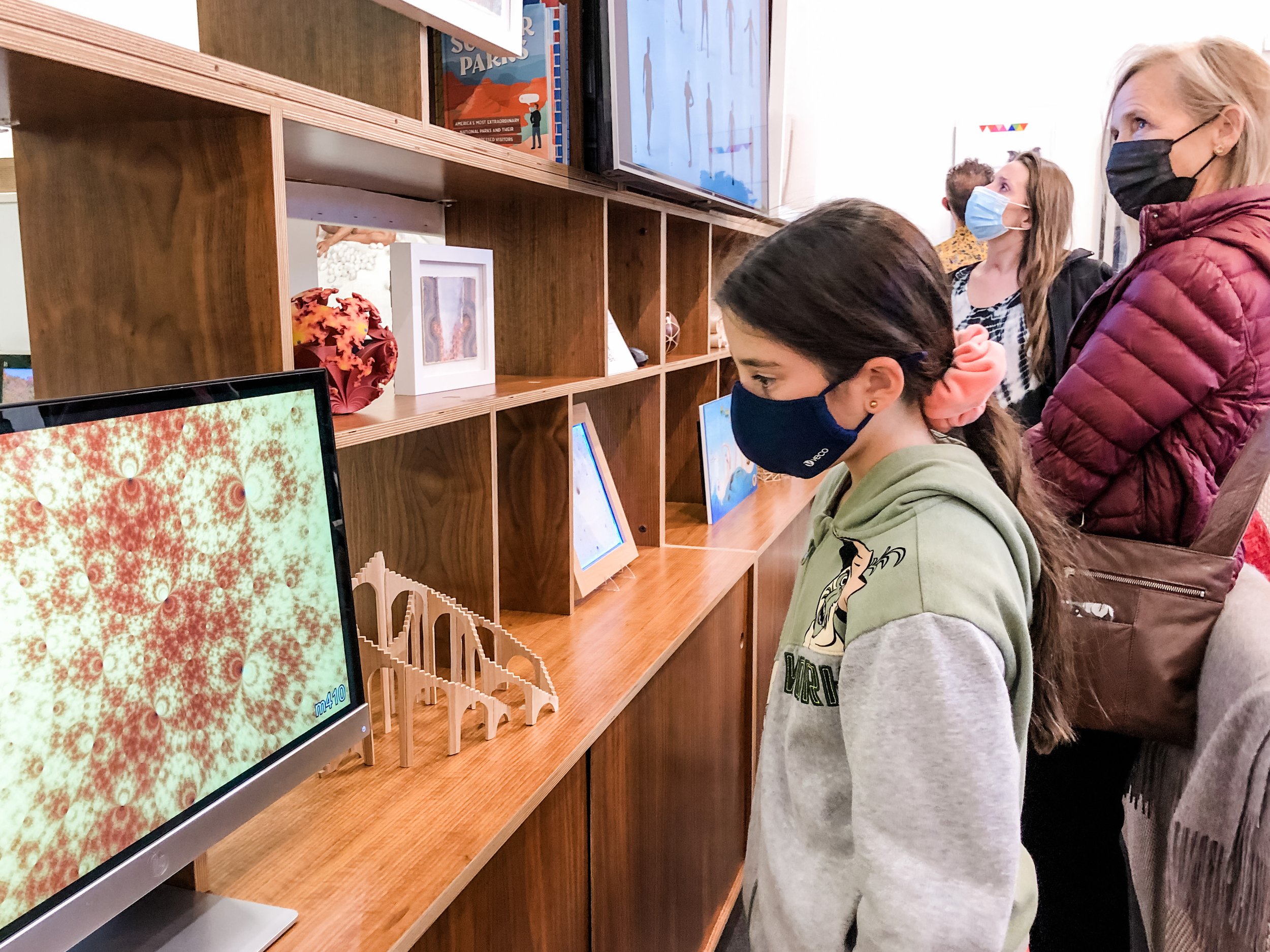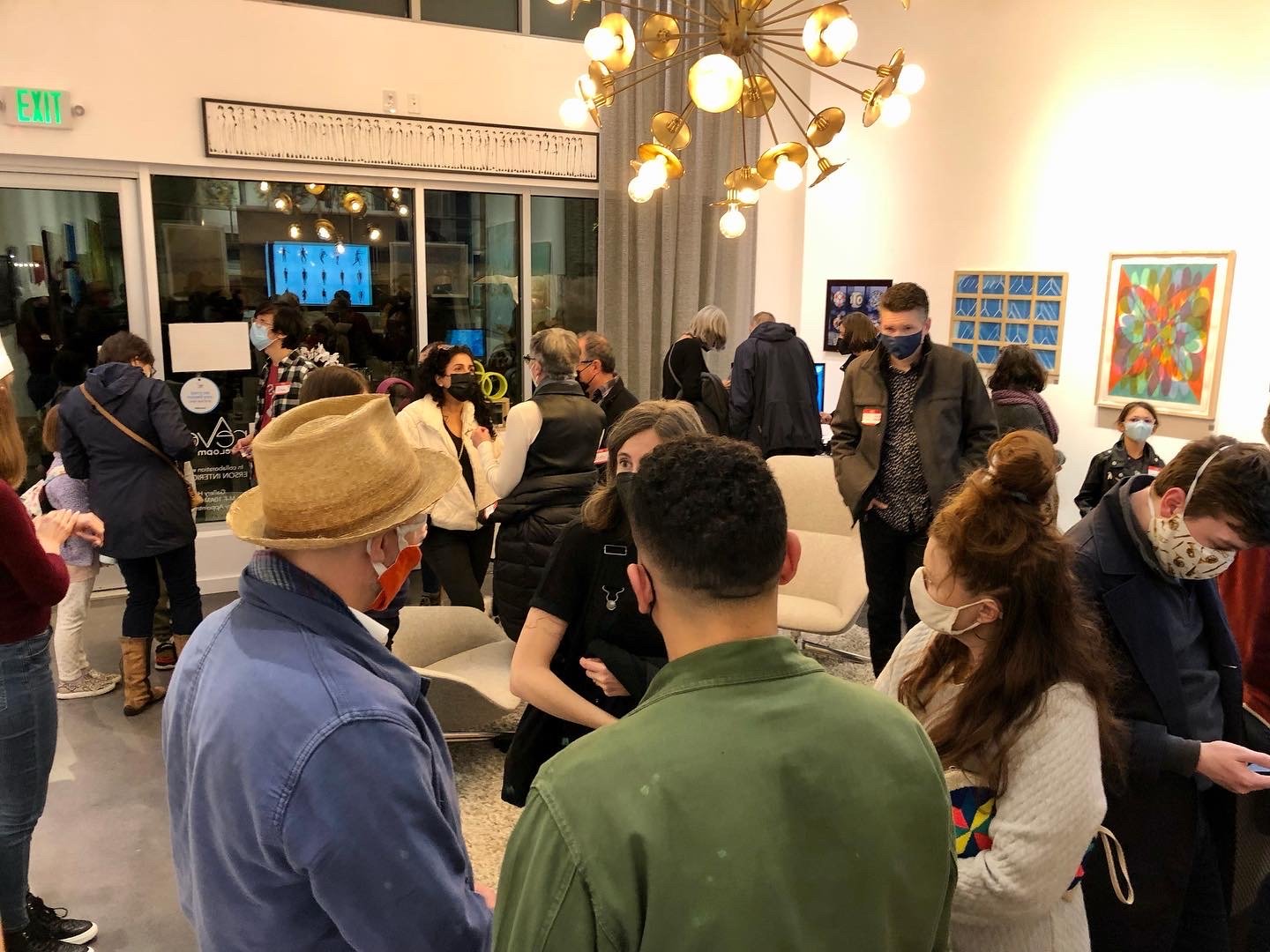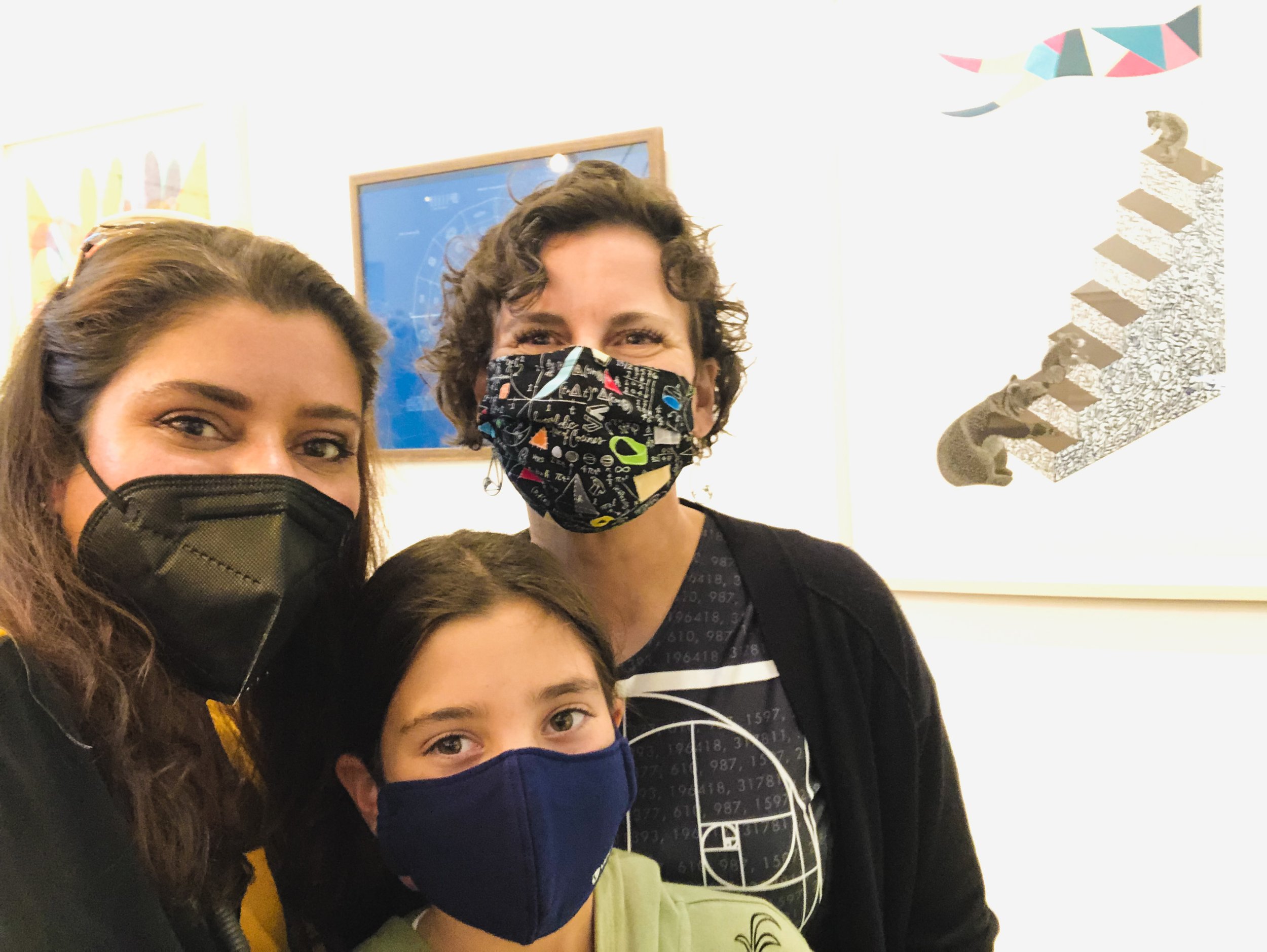Color Coded
Color Coded
By Jessica K. Sklar and Bronna Butler
Acrylic Print of Oil Painting (SUMM)
20” x 15” x 1.5”
ARTIST BIO
Jessica K. Sklar (community.plu.edu/~sklarjk, @JessicaKSklar) is a professor of mathematics and the current mathematics chair at Pacific Lutheran University; she also serves on SUMM ’s Programs Committee. Her passions include math and art, math and pop culture, recreational math (the math of games and puzzles), and abstract algebra. She co-edited the book Mathematics and Popular Culture (McFarland, 2012) with Elizabeth S. Sklar, and is a member of the Mathemalchemy team (https://mathemalchemy.org/), creating a large multimedia art installation that celebrates the creativity and beauty of mathematics. She and artist Bronna Butler together make up QED Arts, a mathematical art collaborative.
Color Coded (acrylic print of oil painting) and Equilateral Enigma (acrylic graphic print)
QED Arts (Jessica K. Sklar & Bronna Butler)
ARTIST STATEMENT
Cryptography is the art of creating and breaking codes. For 2000 years, people have been sending encrypted messages to one another for military, business, or personal reasons. The way that cryptography works basically is this: a message sender takes a message, written in plaintext, and uses a key (which could be a number, a picture, a piece of music, or anything, really) to encipher the plaintext, creating ciphertext—which, the sender hopes, will be meaningless to everyone except for the intended recipient of the message. The sender sends the ciphertext to the message receiver, who uses the key to decipher the ciphertext back into plaintext.
For these pieces, the artists have created a simple substitution cipher—that is, a secret code wherein distinct symbols represent distinct letters of the alphabet. The key to the cipher is a specific collection of 25 equilateral triangles of distinct colors, themselves arranged to form a triangle.
Both Color Coded and Equilateral Enigma display this key, along with ciphertexts that were created using it. Each print stands alone as a puzzle for the viewer, who must first figure out that the multicolored triangle is a cipher key and that the other collection of colored triangles in the print is a ciphertext, and then figure out how to use the key—and, in the case of Equilateral Enigma, additional provided information—to retrieve the corresponding plaintext.
The ciphertext in Color Coded provides the name of the artists’ cipher, while the ciphertext in Equilateral Enigma describes the pattern of triangles forming the ciphertext. This pattern is taken from Aleš Drápal and Carlo Hämäläinen’s paper, “An enumeration of equilateral triangle dissections,”[1] in which the authors analyze dissections of equilateral triangles into smaller equilateral triangles. The original image is black-and-white; the artists have colored in the triangles as appropriate for their ciphertext message.
For those who wish to solve the puzzles on their own, stop reading now! For those who wish to know more, read on . . .
Using the cipher key:
Each color in the key represents a distinct letter, as indicated below.
Note that since there are only 25 smaller triangles and there are 26 letters in the English alphabet, one letter isn’t associated with any of the provided colors. The letter Z doesn’t appear in the key; the artists have made the decision to encipher Z as a black triangle. Note that seeing just the key does not provide sufficient information for someone who wants to encipher a message; however, if a message recipient sees a black triangle in a ciphertext message, they will be able to determine that it represents Z since Z is the only letter not already associated with a color in the key.
The big challenge for viewers, of course, is to think of placing letters into the smaller triangles, as shown above.
If you wish to try to decipher the ciphertexts on your own now, you’re encouraged to do so! If you want more hints, read on . . .
Deciphering
The ciphertext in Color Coded is deciphered by writing down the letter associated with each color in the ciphertext, working from left to right.
It is harder to decipher the ciphertext in Equilateral Enigma because the colored triangles that compose the ciphertext are not laid out in a line. The poem and the image to its right describe how to order the subtriangles: they should be ordered from largest to smallest, and with triangles that are pointing up appearing before triangles of the same size that are pointing down. So the first triangle in the ciphertext—that is, the triangle corresponding to the first letter in the plaintext—is the largest colored subtriangle, at the top of the ciphertext image. There are two triangles with the next-largest size: one that points up (in the lower left) and one the points down (adjacent to the one pointing left). The one pointing up corresponds to the second letter of the plaintext, and the one pointing down corresponds to the third. And so on.
Want to return to solving the puzzles? Have fun! If not, or if you’ve already solved them, read on to discover (or confirm) the plaintexts, and to learn some cool math facts.
Plaintexts and additional information
Deciphering the ciphertext in Color Coded yields the plaintext message TRICIPHER. Spaces between words are commonly omitted when enciphering text; inserting a space into a reasonable location yields the intended message TRI CIPHER, which is the name of the artists’ cipher. Tri is also the name of the dog in the piece.
The ciphertext in Equilateral Enigma deciphers to the plaintext message PERFECTDISSECTION; again, inserting a space into a reasonable location yields the intended message, PERFECT DISSECTION. A perfect dissection of an equilateral triangle into smaller equilateral triangles is a dissection in which no two of the smaller triangles with a common orientation (that is, both pointing up or both pointing down) have the same size.
The pattern of the ciphertext in the piece is itself a perfect dissection of an equilateral triangle into 17 equilateral subtriangles. In their paper, Drápal and Hämäläinen prove, among many other results, that only 6 such perfect dissections exist, up to isomorphism (a type of mathematical equivalence).
Discrete Applied Mathematics, 158(14), 28 Jul 2010, 1479–1495.
